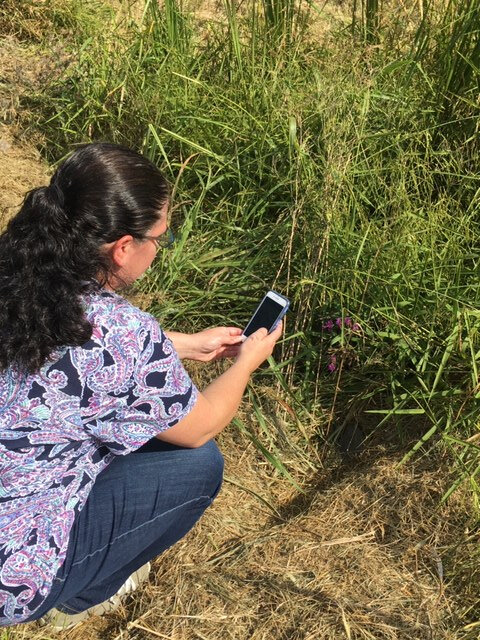Author: Elizabeth Soper - Text adapted from National Wildlife Federation
Educators Explore Sustainability through the Alcoa Warming-Waste-Water-Watts and Wildlife Program
To succeed as global citizens and future stewards of our planet, children and young adults should be well-versed in the underlying principles of nature and wildlife. Through educational partnerships focused on conservation and environmental knowledge, the National Wildlife Federation engages educators on ways to increase environmental literacy, stewardship, and problem-solving skills in classrooms and curricula across the country. From endangered sea turtles suffering from ocean pollution to shrinking snowy habitat for lynx, wildlife depends on well-informed, young people to address our world’s pressing conservation issues.
New Skills for Educators
What does lunch waste and compost have in common? How can students explore the difference between facts and opinions when learning about climate change? And how can students use technology such as apps like iNaturalist Seek to identify plant and wildlife observations? All of these topics and more were investigated by educators as part of the Alcoa Warming-Waste-Water-Watts and Wildlife (Alcoa W5) program in Newburgh, IN and Massena, NY. The Alcoa W5 is a collaborative program between the Alcoa Foundation, the National Wildlife Federation (NWF) and the Foundation for Environmental Education (FEE). This program, now in its third year, uses the globally acclaimed Eco-Schools programe as a framework to guide the schools as they explore sustainability at their schools and in their communities. This year the program is being implemented in three locations in the United States, Norway and Australia.
Project-Based Learning in Indiana
A key part of the program is to provide educators with the knowledge, tools and resources they need to implement this program in their schools. In September, educators from four schools in Newburgh, Indiana came together to collaborate and review best education practices for student sustainability projects.
Educators from Tecumseh High, Castle Elementary, Boonville High and Castle North Middle School participated for the first time. Castle North Middle School, a returning participant to the program, shared an inside look for the new participants regarding their newly developed schoolyard habitat and community events.
Project-based learning activities and how to engage students across disciplines were of particular interest to educators. Using the trash remaining from breakfast, teachers sorted through recycling, compost and trash to complete a waste and consumption environmental audit, The Cool School Challenge was introduced to teachers, after going through an exercise of noticing “energy vampires” in the room. Energy vampires are electronic devices like computers, monitors, printers, SMART boards and televisions, whose carbon dioxide emissions can be tracked through the classroom carbon calculator. Other ways tools and technology aides were implemented were by documenting biodiversity, or the variety of animal and plant species in a particular habitat, through the app, iNaturalist Seek. This app uses image recognition technology to identify plant and animal species. In addition, teachers downloaded the app, Adobe Spark, to discuss how digital storytelling can play a part in how their student sustainability projects are shared with their schools and communities.
Inside & Outside Learning in Upstate New York
In October, educators from four schools in Massena, NY came together to spend time learning how to expand and enhance their Alcoa W5 program work. Madison, Nightengale and Jefferson Elementary Schools are returning for their third year of participation. This year educators will focus on the issues of climate change, consumption and waste, and schoolyard habitats. Massena High School is new to the program this year and is working to develop a compost program to support an existing indoor garden classroom and to explore the biodiversity of their school grounds. All four schools will work together to plan and implement a community-based project with the support of Alcoa volunteers. Currently, they are exploring the concept of a student-led project to develop a much-needed community garden in Massena, NY.
During the teacher professional development, time was spent exploring NWF’s Climate Classroom website and engaging in activities associated with the Years of Living Dangerously videos. Educators had the opportunity to play the role of their students as they explored the complex topic of climate change learning to distinguish between facts and opinions, determine credible sources, and how to analyze and interpret data. They created food system maps, examined compost for decomposers and conducted a lunch waste audit to address the issue of consumption and waste.
“We look forward to supporting the schools as they move through the exploration of sustainability at their schools. The program melds well with what we are trying to achieve as well at the Alcoa USA facility here in Massena. As environmental engineers, both Didi and I understand the importance in helping students to better understand the science and the social aspects of sustainability. We want them to know that there are both education and career opportunities right here in their region if they wanted to explore them further.
Nathan Rufa, Environmental, Health and Safety Manager, Alcoa USA Corporation and program volunteer.
For more information about the NWF Alcoa W5 Eco-Schools USA programme, please contact Elizabeth Soper, NWF Director of K-16 Education at soper@nwf.org.






